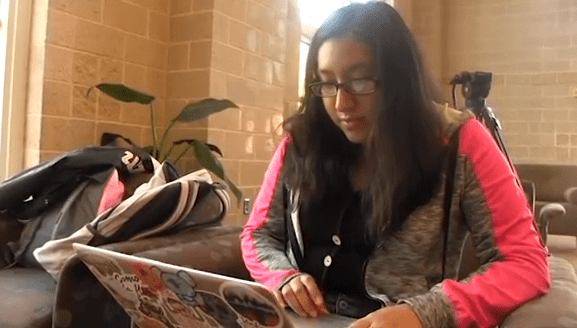Alyssa Washington
palmettoreport@gmail.com
(Rock Hill, S.C.) — Winthrop University often prides itself on its efforts to promote diversity through coursework, cultural events and on-campus clubs and organizations.
While Winthrop is predominantly white, about 62 percent of the 6,000 student body, the school often touts that the remaining 38 percent of students come from “various ethnic and cultural backgrounds,” according to the Office of Diversity and Student Engagement website.
That diverse population includes the 4.88 percent of students, or nearly 300, who are Hispanic or Latino.
However, of the more than 170 student organizations on campus, there is not a single group specific to the Hispanic/Latino community, which students can join.
In recent years, students created a club called Voces (Spanish for voices), whose stated goal was to “spread knowledge about the diverse cultures and traditions in Latin American countries,” but the club is currently marked as inactive on the Winthrop student organization list.
Mexican-American student Kelly Luna said she often feels “left out” in her experience at Winthrop.
“The only Hispanics I interact with are in my Spanish classes,” said Luna. “That’s basically it. In all of my other classes, I’m the only Hispanic there.”
Luna said she feels the university should host more cultural events centered around Hispanic culture.
“There isn’t a lot. I don’t think that they did a cultural event for Día de Los Muertos. I was kind of disappointed, because it’s such a big holiday,” she said.
A review of the 169 cultural events listed on the Winthrop website for the fall semester, found only four (or 0.02 percent) of those events were specific to the Hispanic/Latino community.
Winthrop admissions counselor Sarai Ortega said, via email, that Winthrop has a “unique” campus.
“We can always diversify the diversity we have and I hope to be a part of that initiative while being a part of the admissions team,” said Ortega, who is a Winthrop graduate of Hispanic heritage.
“I loved my experience as a student at Winthrop,” she said. However, there were times, she said, where she missed her hometown and its larger Hispanic community.
“But it made me gain a deeper appreciation of my culture,” said Ortega.
According to the Department of Education, undergraduate enrollment for Hispanic students in the U.S. had more than doubled to 3 million from 2000 to 2015. Yet, the percentage of Hispanic students at Winthrop essentially mirrors the state population, where Hispanics represent about 5 percent of residents in South Carolina.
However, Luna said she believes Winthrop should add more images of Hispanic students to the university’s advertising on its website and in pamphlets.
“I think Hispanics would be more prone to apply to college and grow the Hispanic population at Winthrop,” said Luna.
Ortega added the admissions department works to recruit minorities and promote the school’s diversity to prospective students.
“We host Kaleidoscope Multicultural Day in the spring as an additional campus visit event that is specifically for minority students. The event is unlike other events we host and students are able to learn in depth about Winthrop’s diversity and resources we offer as a campus,” said Ortega.
Despite those efforts, the university has struggled to recruit Hispanic/Latino faculty, which is noticeable to students.
“I’ve only had two Hispanic teachers in all my education and one of them was my Spanish 102 professor (at Winthrop),” said Téa Franco, a mass communication student of Hispanic heritage.
Franco, who was a guest on the Palmetto Report podcast, said she appreciated the diversity at Winthrop, but expressed concerns about Hispanics being underrepresented on campus.
According to a 2016 Winthrop report on diversity, there were only seven full-time faculty members in fall 2014 and 28 total employees in fall 2015 who identified as Hispanic, Latino or Latina.
The report was produced by a committee of administrators, faculty, staff and students, which was charged with developing ideas to improve faculty and staff diversity.
The group made a number of recommendations, including diversifying those who are responsible for hiring decisions and including diverse faculty members in the hiring process.
The university has already implemented a number of those recommendations, such as appointing a chief diversity officer and developing an institutional protocol for faculty searches.
Finally, the report states, “we have a lot of work to do because so many friends of Winthrop seem to think diversity is something the university has already mastered.”
A number of Hispanic students would seem to agree.
